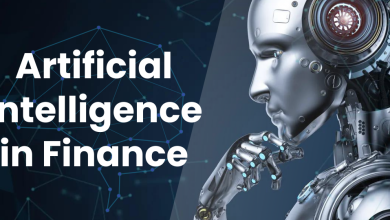
AI holds immense promise for business, but companies are starting to find themselves tangled up in a mess of disconnected tools that can’t communicate. A classic scenario is that a company adopts a set of excellent AI-driven tools with proven ROI, then ends up juggling multiple solutions at once: one for data analytics, another for workflow automation, and yet another for customer interactions – without dedicated expertise or a cohesive integration strategy.
Without seamless integration, companies risk fragmented data, inefficiencies, and missed AI-driven insights.
The good news is that the demand for a more structured approach is already growing, meaning we’ll see more companies turning to unified AI stacks – comprehensive platforms that orchestrate machine learning, generative AI, and automation within a single ecosystem. In fact, 88% of CIOs last year expressed desire for a single integrated platform that offers a more streamlined and seamless experience for their IT teams, with tighter integration across essential workflows.
This shift will let AI deliver on its full promise, helping companies automate complex, multi-step workflows with greater intelligence and accuracy.
The rise of unified AI stacks
A unified AI stack consolidates multiple AI capabilities into a single framework, ensuring they work in harmony. Rather than implementing separate AI tools for different tasks and functions, organisations can use a unified system with integrated automation, decision-making, and workflow execution.
In other words, a unified stack solves the challenges of a fragmented AI environment and makes it much easier for companies to scale automation and data flow.
For example, a financial services company using a unified AI stack can combine machine learning for fraud detection, generative AI for personalised customer messaging, and workflow automation for compliance reporting – all within the same platform. This ensures that data and insights flow seamlessly between functions, eliminating bottlenecks and improving overall efficiency.
However, before companies can start reaping the rewards of a unified AI stack, they need the right expertise.
No-code democratising AI
AI’s transformative potential remains constrained by the lack of technical expertise to build, deploy, and maintain AI-driven solutions. However, a no-code solution lets users build applications and automate processes without coding, using visual interfaces and drag-and-drop tools.
In short, it empowers non-technical users while enabling AI specialists to work faster and more efficiently.
This shift is making AI adoption more accessible to everyone and even easier and faster for companies with specialists. Companies can democratise AI development by unifying their AI tools within a no-code platform, letting people create custom automation workflows, configure AI-driven chatbots, and develop data visualisation tools without needing IT intervention.
As a result, they accelerate AI deployment, letting companies experiment, iterate, and optimise AI applications much faster.
The combination of AI and no-code also reshapes how businesses approach software development. Traditionally, companies have relied on off-the-shelf software solutions to avoid the complexity and cost of custom development. However, AI combined with no-code offers an alternative where companies can tailor AI-driven applications to their specific needs without the risk of high development costs or vendor lock-in.
It lets companies build, rather than buy, the AI-driven tools they need.
Why unified AI stacks are dominating 2025
The shift toward unified AI stacks is already underway, and it’s becoming a standard approach for organisations looking to harness AI effectively. Companies are realising that fragmented AI solutions are unsustainable, both from an operational standpoint and in terms of cost efficiency. Managing multiple AI vendors and disconnected systems is proving to be an unnecessary burden, prompting companies to seek integrated platforms that streamline AI adoption.
The increasing complexity of AI applications is also driving this transition. As AI evolves beyond simple automation and into decision-making augmentation, businesses need a structured way to manage and govern AI-driven processes. A unified AI stack provides this structure, ensuring that AI functions cohesively across all aspects of an organisation.
Industries such as financial services, healthcare, and manufacturing are leading the charge, using unified AI stacks to enhance risk management, optimise operations, and improve customer experiences. Companies that adopt a unified approach now will position themselves ahead of the curve, benefiting from greater agility, efficiency, and scalability in their AI-driven initiatives.
The future is unified
The era of fragmented AI environments is coming to an end. Companies can no longer afford to manage AI tools in isolation, as the inefficiencies of disconnected systems outweigh their benefits. A unified AI stack enables seamless automation, predictive intelligence, and invaluable insights, creating an AI-driven environment that is both scalable and adaptable.
By consolidating AI capabilities into a single framework like a no-code platform, organisations can eliminate complexity, reduce costs, and drive innovation at an accelerated pace. As AI continues to evolve, the companies that invest in unified AI stacks will lead the way, redefining how automation, intelligence, and human expertise work together.
The future of AI isn’t about choosing the right standalone solutions – it is about creating a seamless, integrated ecosystem that empowers businesses to operate smarter, faster, and more effectively.




